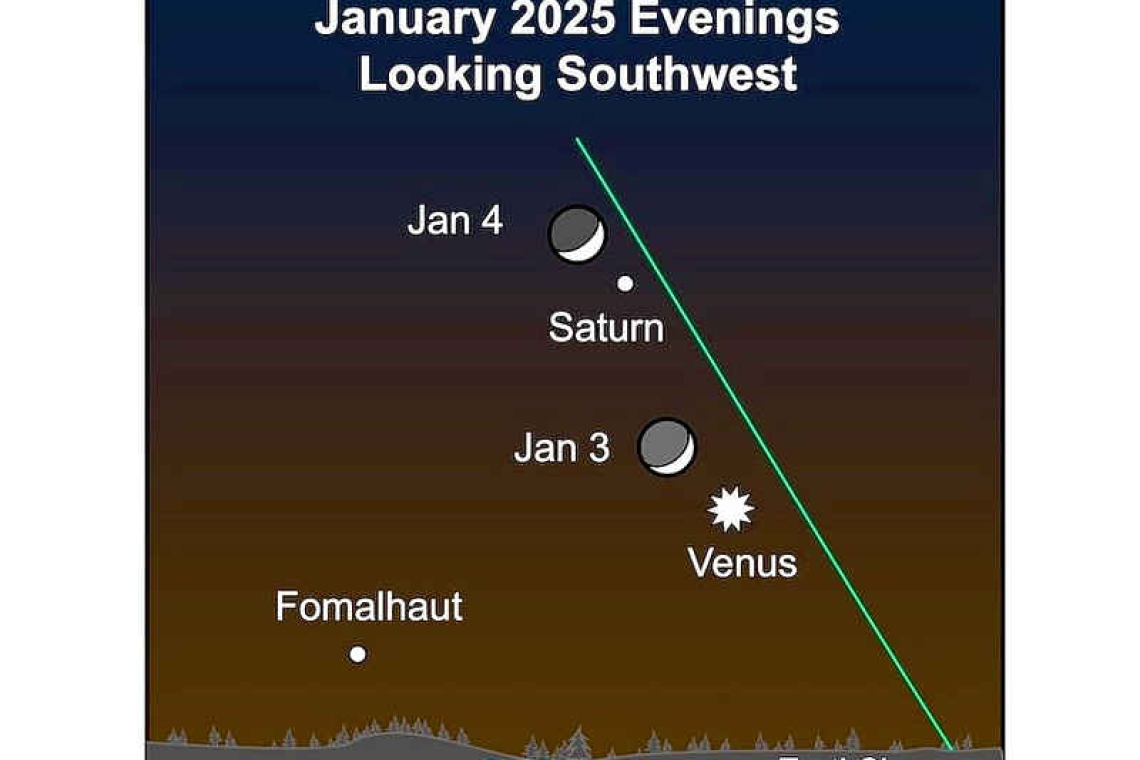~ St. Maarten’s Backyard Astronomy for January 3 - 5, 2025 ~
Sun rises at 6:44am
Sun sets at 5:50pm
Lunar phase: first quarter, waxing crescent
Moon rises at 10:26am, Saturday
Moon sets at 10:30pm, Saturday
This weekend after sunset, you can see Venus and Saturn in the west, with the thin crescent moon close to Saturn on Saturday night. Don’t miss the chance to see them within intimate reach—almost kissing distance—with Venus nearby. Jupiter dominates the high sky during most of the evening hours, and Mars rises from the east around 7:00pm.
The new year starts with the Quadrantids meteor shower at its peak. Look northeast in the hours before dawn on January 3. The moon will be a waxing crescent, setting a few hours after sunset on January 2 and therefore should not interfere with the Quadrantid meteors. The radiant point for the Quadrantids is near the famous Big Dipper. Because the Quadrantid radiant is far to the north on the sky’s dome, our view here in the tropics is limited, but it’s better than you would get down in the Southern Hemisphere, so it’s worth the effort to seek it out. The Quadrantids can produce over 100 meteors per hour, although this is the exception rather than the rule. The Quadrantid shower is one of four major meteor showers each year with a sharp peak. This means the Earth’s encounter with the space debris is intense and short-lived. This contrasts with most of our meteor showers that seem to linger for days or even weeks, with a long, broad peak. FYI: the other three meteor showers with sharp peaks are the Lyrids in April, the Leonids in November, and the Ursids in mid-December.
If you’re curious about the source of this meteor shower, you are in good company. Several comet or comet-like entities have been proposed, but it’s still quite the mystery. Three possibilities have been suggested, and there is the chance that all three contribute to the Quadrantids. Another puzzle is the name of the shower. The constellation Quadrans Muralis has fallen out of the modern constellations list, and so we all look to the region of the sky “near the Big Dipper” as the radiant point.
It’s early and late-night sky delights this weekend—what a nice start to 2025.
Thank you for keeping up with the Night Sky articles, backyard (or beach) astronomy designed for St. Maarten sky viewing. FYI: If you are out later in the week, note that each star rises about four minutes earlier each day than written here, and the moon rises 50 minutes later. Night Sky is researched and compiled by Lisa Davis-Burnett. Earthsky.org is a key resource for information and images. Questions or comments? Email davisburnettlisa@gmail.com







